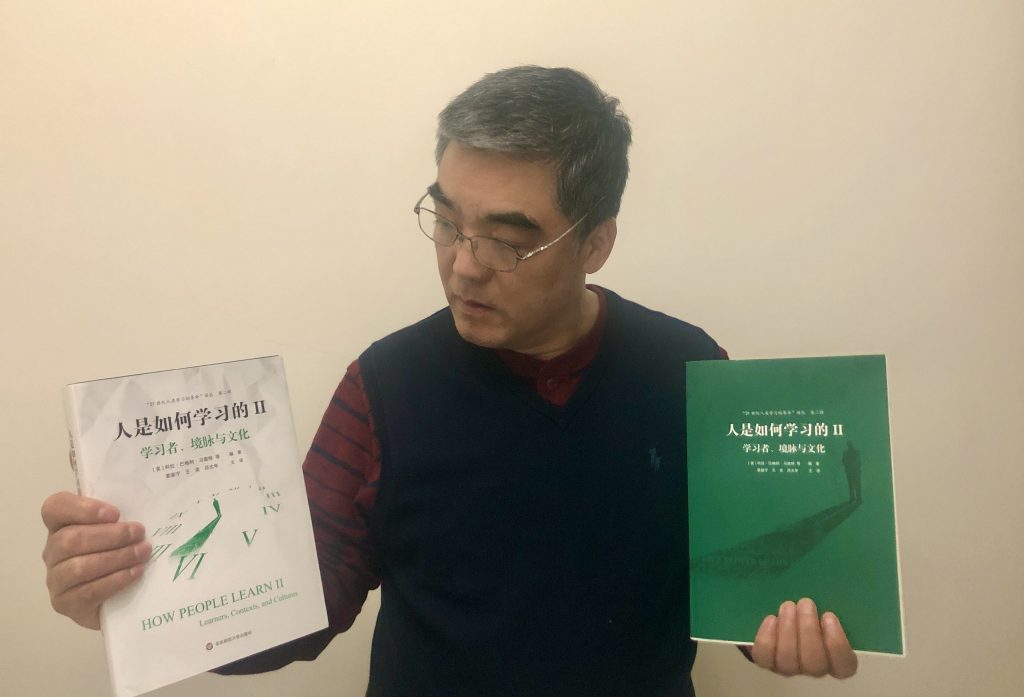书接上回,继续读《人是如何学习的》!
在前面的推文《好书推荐:《人是如何学习的》》中,自留地君向读者诸君推荐了这本好书,之后,又分3期,围绕着这本书中提出的二十一条主要结论展开点评。

在《人是如何学习的:21条主要结论1》和《人是如何学习的:21条主要结论2》中,已经共同品读了17条主要结论。
今天,我们就一起来品读最后的4条主要结论。
结论8-1
做出使用某技术支持学习的决定应基于证据,这些证据要表明该技术在以下方面相似的情境中具有积极影响:
- 学习类型和学习目标;
- 学习者特征;
- 学习环境;
- 可能影响学习的社会和文化境脉特征;
- 为学习者和教育者使用该技术提供支持的程度。
CONCLUSION 8-1: The decision to use a technology for learning should be based on evidence indicating that the technology has a positive impact in situations that are similar with respect to:
- the types of learning and goals for learning;
- characteristics of the learners;
- the learning environment;
- features of the social and cultural context likely to affect learning; and
- the level of support in using the technology to be provided to learners and educators.
自留地君点评:这一条结论非常重要,尤其是对于从是教育技术学相关工作,试图将教育科技整合到各种学习/教学活动中的人士来说,这不仅提出了要求,“做出使用某技术支持学习的决定应基于证据”,而且指明了方向,做出使用某技术支持学习的决定应基于五大类的证据。
结论8-2
在正式教育和培训中,有效使用技术需要仔细规划实施方案,应考虑影响学习的所有已知因素,这些因素包括技术与学习目标的一致性、为教学者和学习者提供专业发展和其他支持、技术的平等获取机会。对学生学习的持续性评价以及对实施情况的评估,对于确保技术的某种特定使用达到最佳状态以及识别所需改进十分重要。
CONCLUSION 8-2: Effective use of technologies in formal education and training requires careful planning for implementation that addresses factors known to affect learning. These factors include alignment of the technology with learning goals, provision of professional development and other supports for instructors and learners, and equitable access to the technology. Ongoing assessment of student learning and evaluation of implementation are critical to ensuring that a particular use of technology is optimal and to identifying needed improvements.
自留地君点评:将技术整合到学习、教学、教育和培训之中,是过去100年来全球教育工作者的共同追求。从几十年前的“信息技术与学科整合”,到“信息技术与学科融合”,再到最近十多年的“信息技术与学科深度融合”,这充分地表明了这种追求是不懈的!
可是,回顾历史,面对现实,人们不难发现,这个有效使用技术在很多时候都变得难以实现,这个结论告诉我们,究竟有哪些因素影响着在正式教育和培训中有效使用技术。
结论9-1
人们在整个生命历程中不断学习和成长,他们的选择、动机、自我调节能力以及他们的境遇,会影响其学到多少、学得如何,也会影响其将所学向新情境迁移多少,迁移得如何。
CONCLUSION 9-1: People continue to learn and grow throughout the life span, and their choices, motivation, and capacity for self-regulation, as well as their circumstances, influence how much and how well they learn and transfer their learning to new situations.
自留地君点评:的确,人的学习是极其复杂的巨系统,受诸多因素的影响。
结论9-2
人们通过积极投入于自己所处环境中的许多场境而不断学习;在义务教育环境之外发生的学习受学习者的动机、兴趣和机会的影响,从事工作(特别是有智力和社会性要求的复杂工作)、社会性参与、身体锻炼和充足睡眠都与众生学习和健康老龄化有关。
CONCLUSION 9-2: People learn continually through active engagement across many settings in their environments; learning that occurs outside of compulsory educational environments is a function of the learner’s motivation, interests, and opportunities. Engagement with work (especially complex work that involves both intellectual and social demands), social engagement, physical exercise, and adequate sleep are all associated with lifelong learning and healthy aging.
自留地君点评:“人们通过积极投入于自己所处环境中的许多场境而不断学习”,这就是说为什么我们要强调终身学习,在职场的学习,以及把学校教育和生活紧密联系!

左手裁切本,右手毛边本